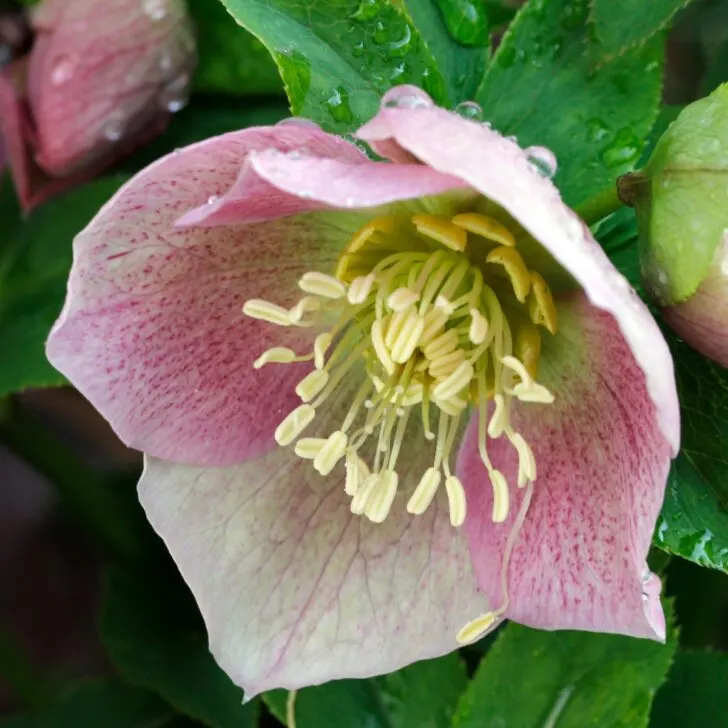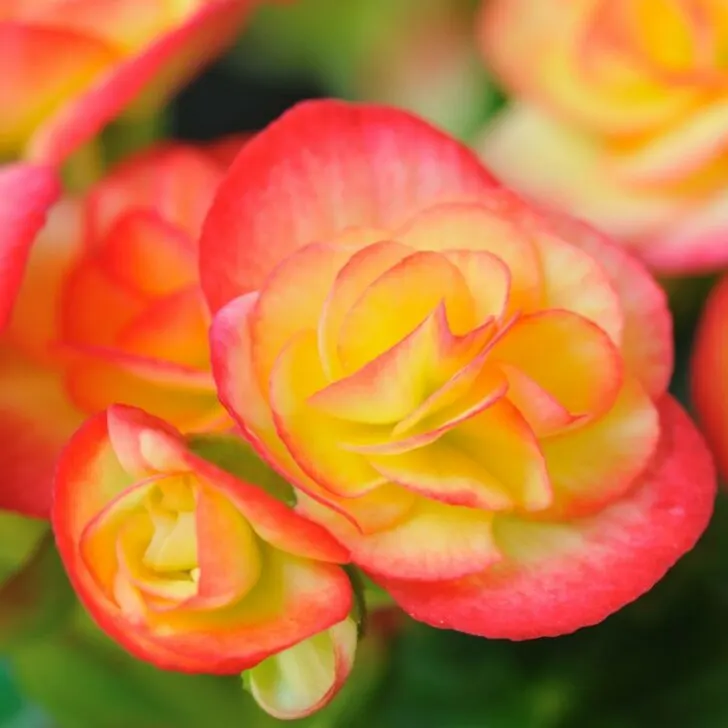Wondering what to do with hellebores in summer after they're done blooming? Here's how to care for them now for more flowers next year!
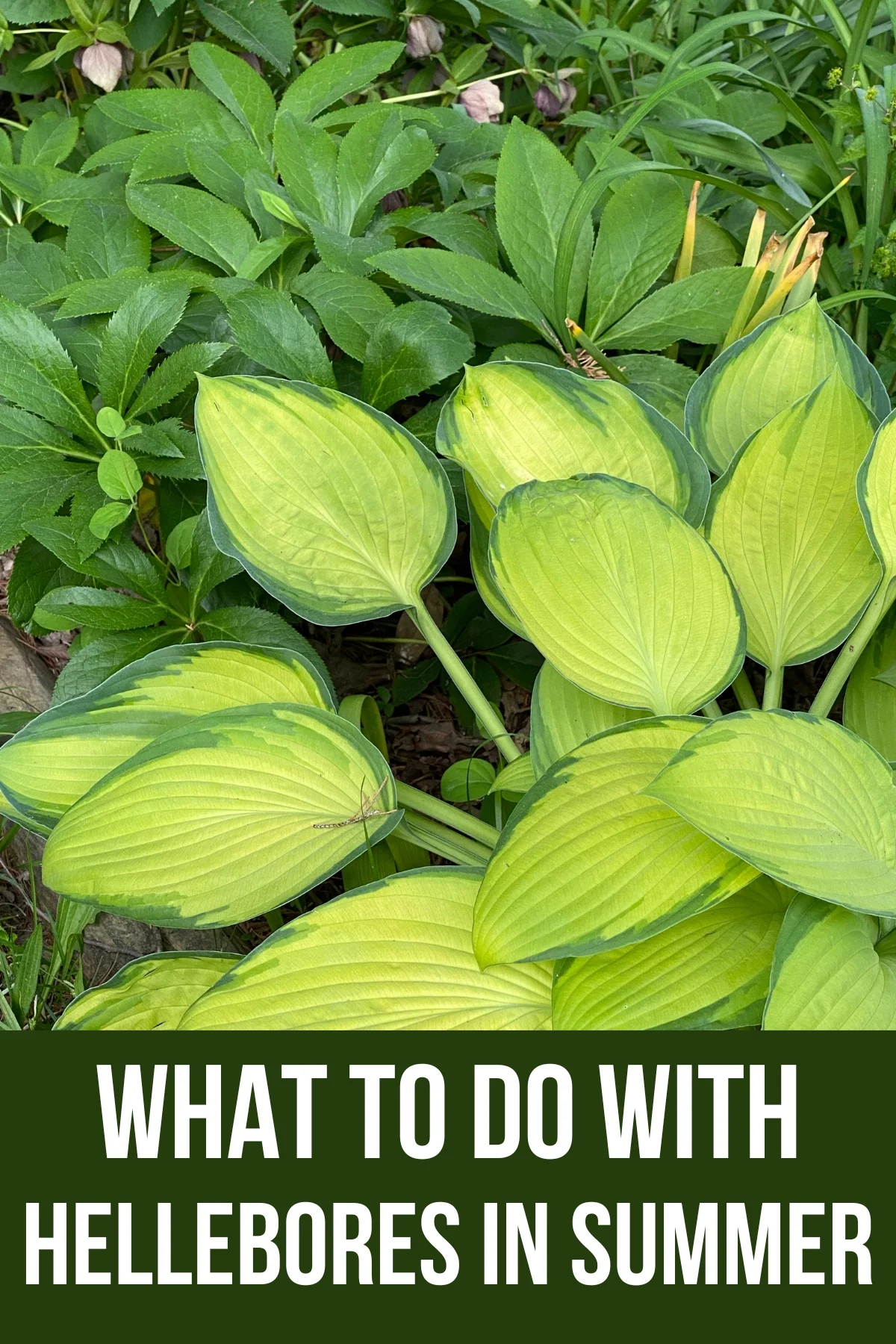
Hellebores, also known as Lenten or Christmas Roses, are a favorite among gardeners for their ability to bloom in the coldest months of winter. Despite their delicate appearance, these hardy perennials are remarkably robust and can thrive with minimal care.
Hellebores require little attention during the warmer months because they go dormant. But a bit of summer maintenance can ensure that these beautiful plants continue to grace your garden with their blooms year after year.
This post contains affiliate links for your convenience. Purchases made through these links may earn me a small commission at no additional cost to you.
What do hellebores look like in summer?
Hellebores have evergreen leaves that remain on the plant year-round. During the summer, the foliage provides a lush, green ground cover. This spot in my garden gets more sun in the afternoon, and the flowers have disappeared on their own.
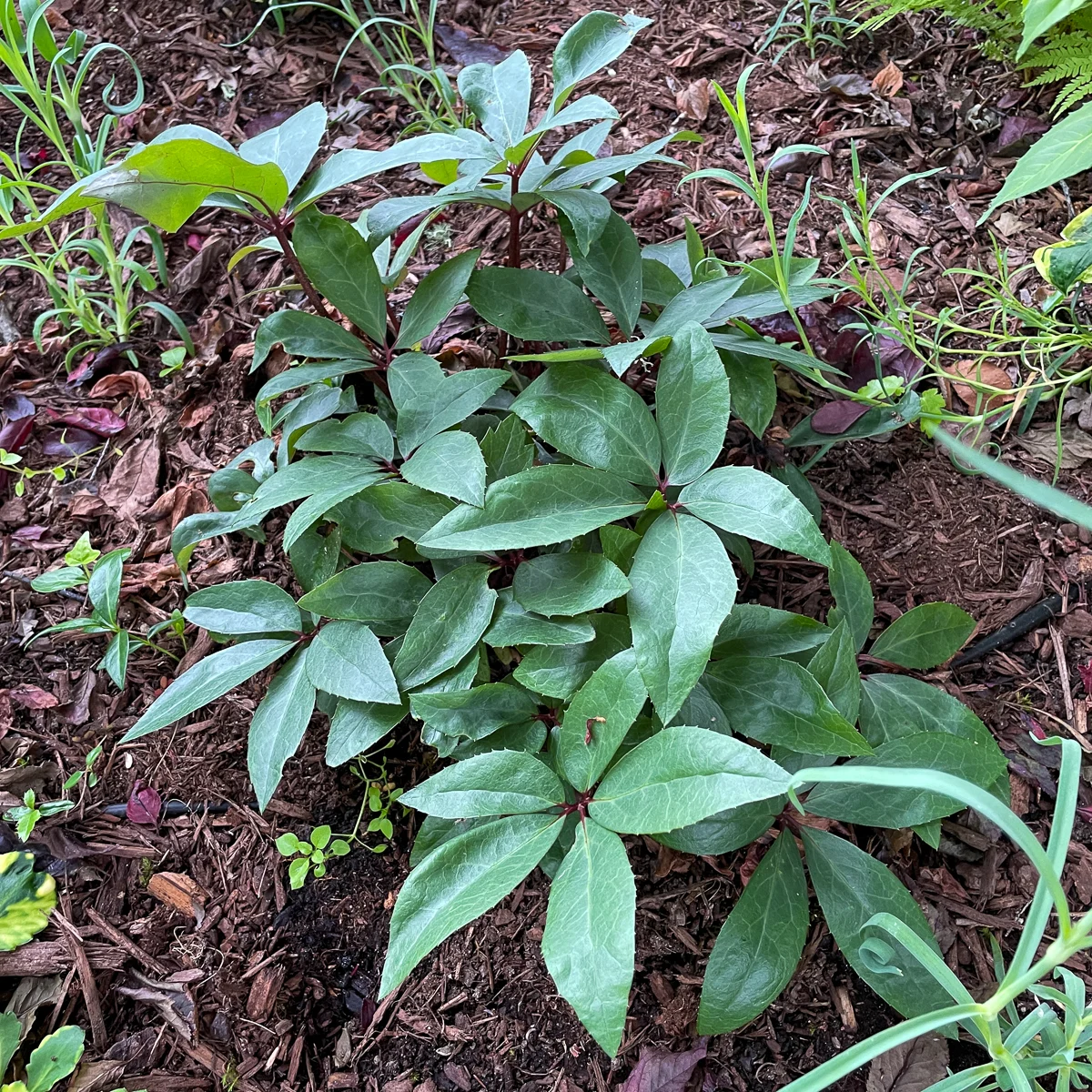
This clump is in a shadier spot, and tends to fade into the background by mid-spring when it's overtaken by hydrangeas and hostas. You can see that the flowers are still visible and have some color, even in June!

Watering hellebores in summer
Hellebores are fairly drought-resistant once established, and can withstand periods of dry weather. However, during prolonged dry spells in the summer, your hellebores will appreciate a good watering.
Keep in mind that overwatering can lead to root rot. Drip irrigation can help provide the moisture required without allowing the soil to become waterlogged. You can see the ¼" drip line with an emitter runs near this hellebore, but not directly under the plant.
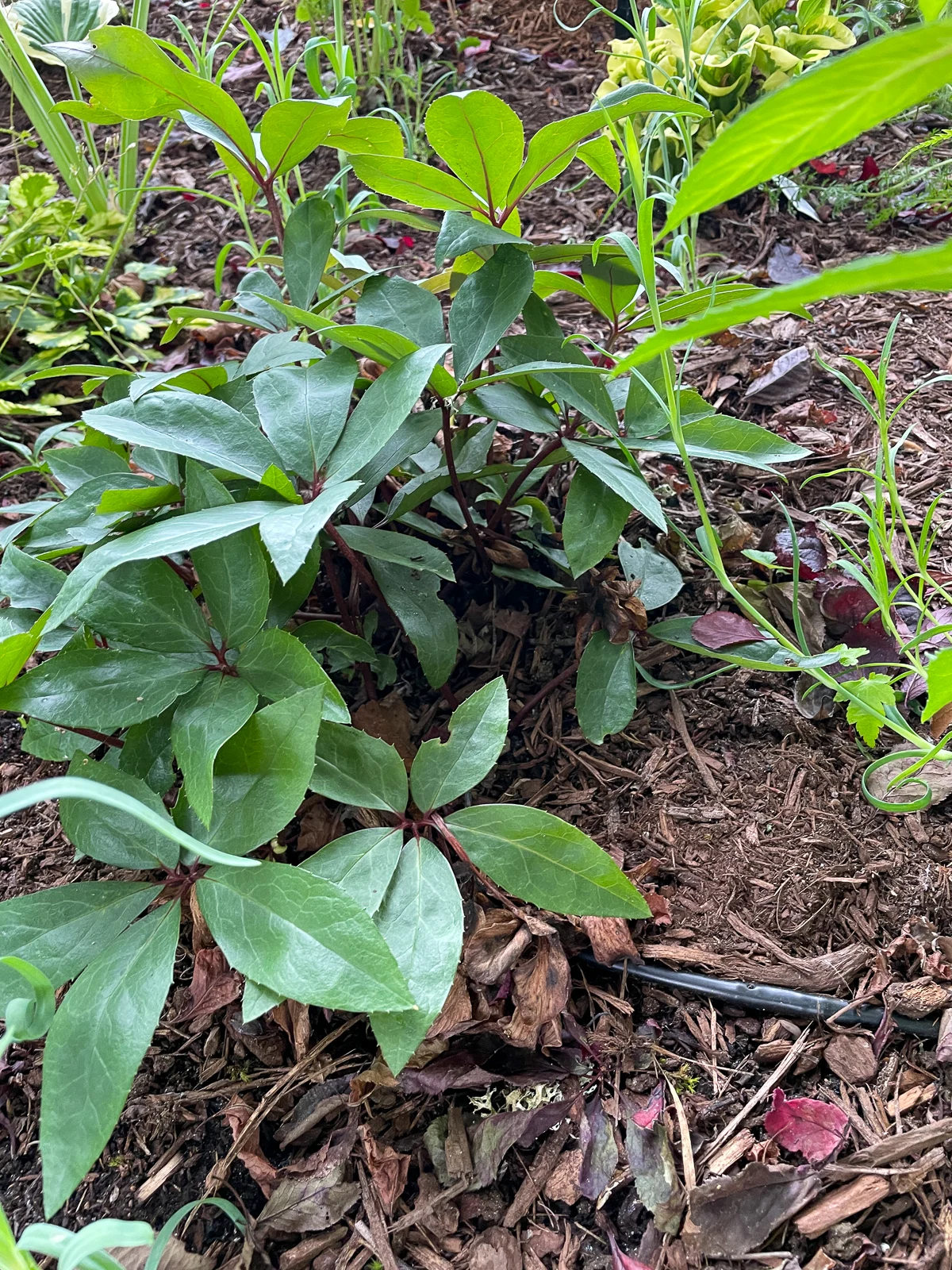
Mulching
Applying a layer of organic mulch around your hellebores serves several beneficial purposes.
It helps conserve moisture in the soil, reducing the need to water frequently. It also keeps the roots cool, which is particularly important during the peak of summer when temperatures can soar.
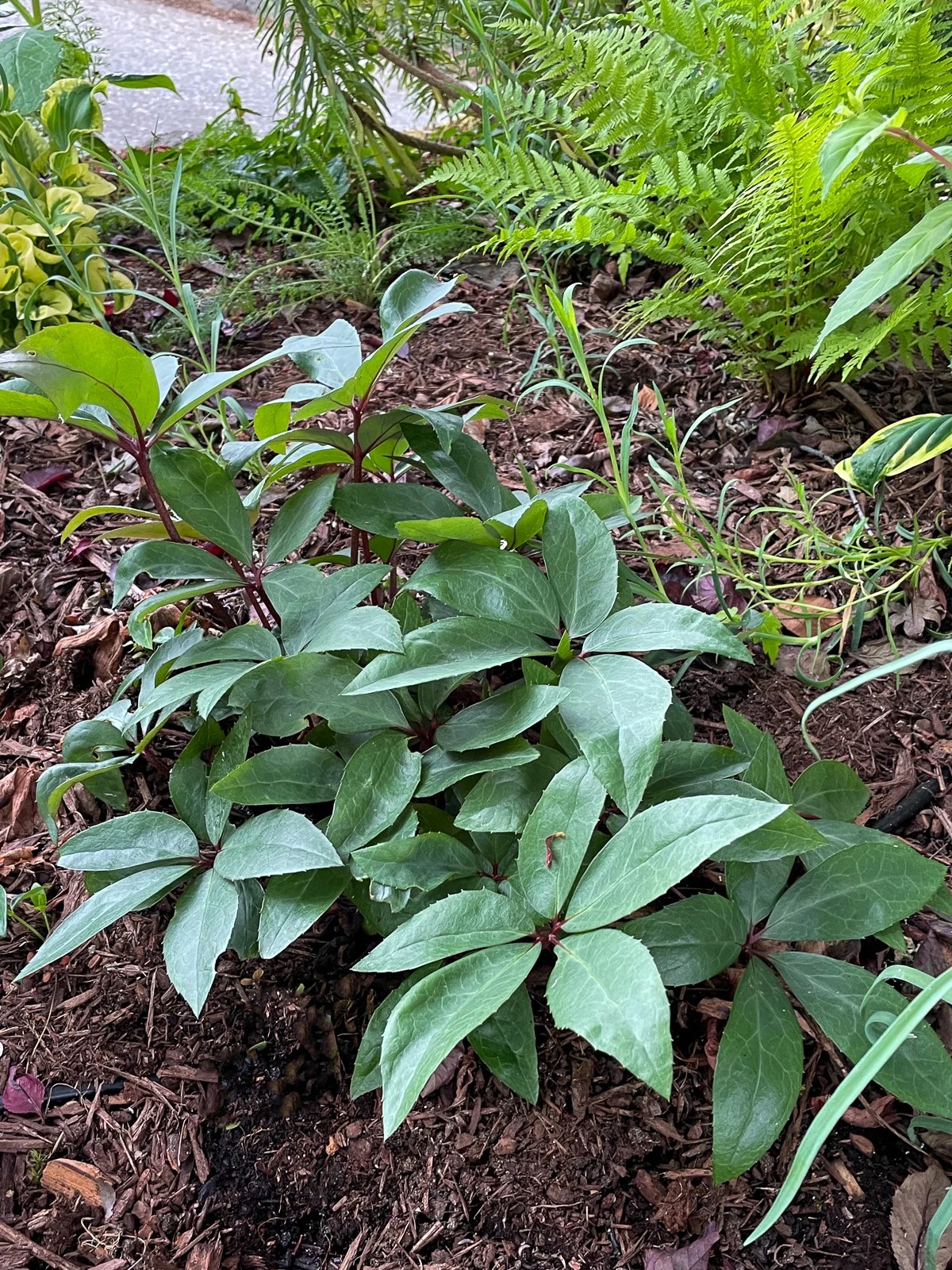
Perhaps more importantly, a good layer of mulch can suppress the growth of weeds that could otherwise compete with your hellebores for resources. A few of the plants in the photo above look like weeds, but they're actually the dianthus and yarrow I started from seed this winter!
Fertilizing
Hellebores are not heavy feeders, but an annual application of a balanced slow-release fertilizer in spring can help keep your hellebores looking their best. I give all the plants a sprinkling of Plant-Tone in early spring.
Don't bother fertilizing in summer, though, because the plant is dormant and won't take up any of the nutrients.
Deadheading
Deadheading, or the removal of spent flowers, will prevent your hellebores from self-seeding. The seedlings that emerge next year won't be true to the parent plant, so they may look completely different!
I usually just let the flowers die back naturally and have never gotten any seedlings. If I notice a particularly sad looking hellebore, like this one, I'll cut the flowers back all the way to the base just to clean it up.
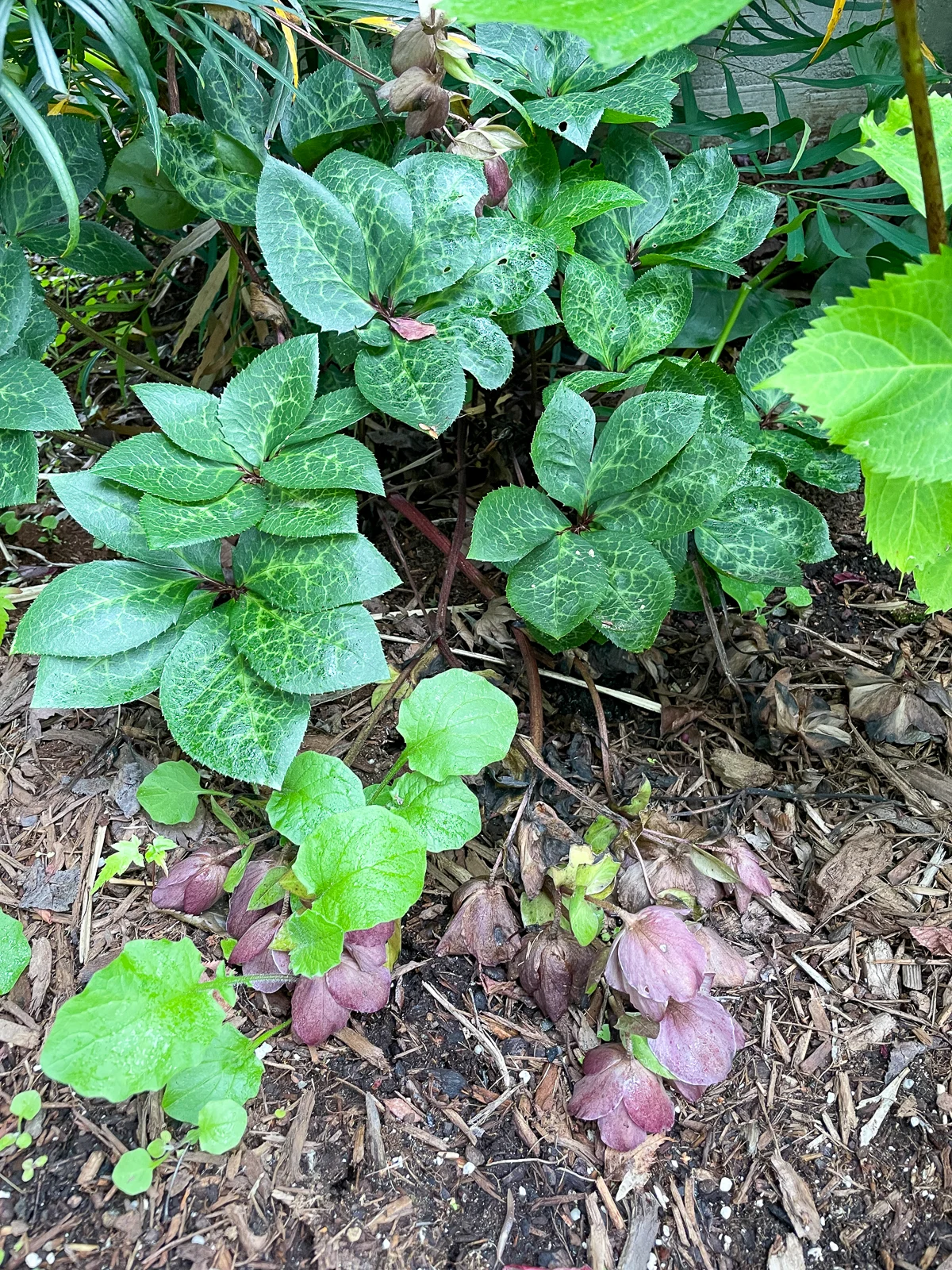
Pruning
When it comes to pruning hellebores, I typically cut off the old, tattered leaves from the previous year in late winter to make the blooms more visible. But if you notice any issues during the summer, such as black spot, you should remove those damaged leaves immediately.
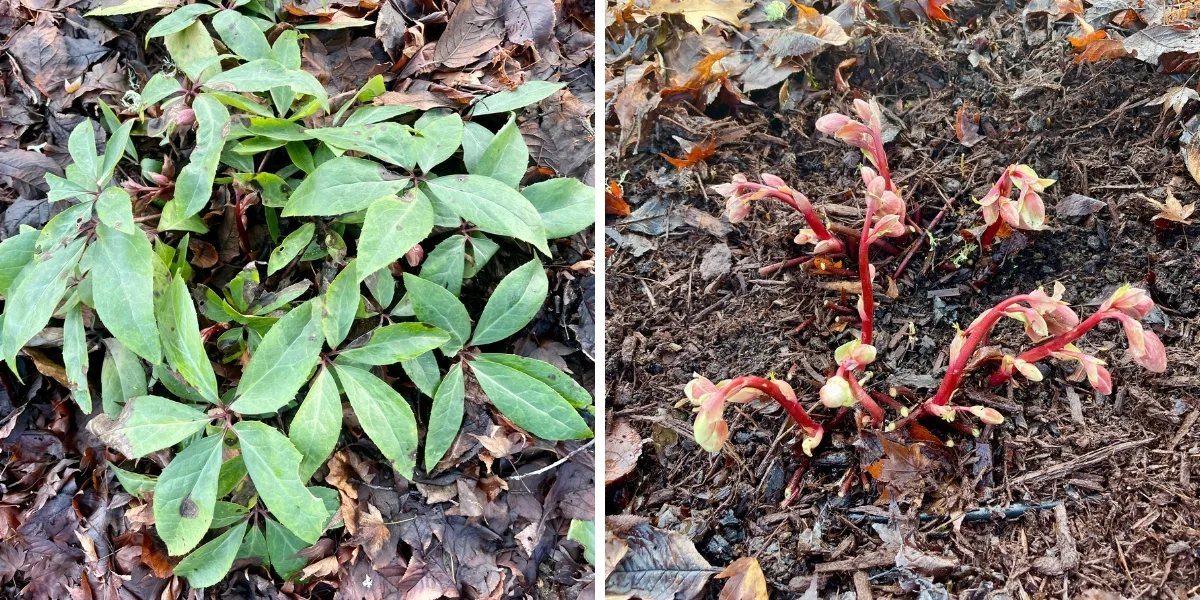
Dividing or transplanting hellebores
Hellebores don't like to be divided or transplanted, and it's not a task you should do in the summer. They are slow to establish, so if you really want to dig them up, it's best to do so in early fall when they start to come out of dormancy.
Dividing or transplanting in early fall gives the plant a chance to establish roots in the still-warm soil before the winter. The divided plants might not bloom as vigorously in the upcoming spring, but they should recover by the following year.
If you're dividing in the spring, do so as early as possible, just as the new growth begins but before the plant has put a lot of energy into producing flowers. Keep in mind, the spring is also when the plant’s energy reserves are at their lowest, which may slow the recovery process.
Pest and disease control
Despite their hardy nature, hellebores can sometimes fall prey to common garden pests like aphids or diseases such as black spot. Regularly inspect your plants for any signs of infestation or infection. At the first sign of trouble, treat your plants promptly with the appropriate pest control or disease treatment method.
While hellebores are relatively low-maintenance plants, a little summer care can go a long way. By following the above tips, you can ensure that your hellebores not only survive but thrive during the summer months, ready to burst into bloom when winter arrives.
Check out these other hellebore articles!


